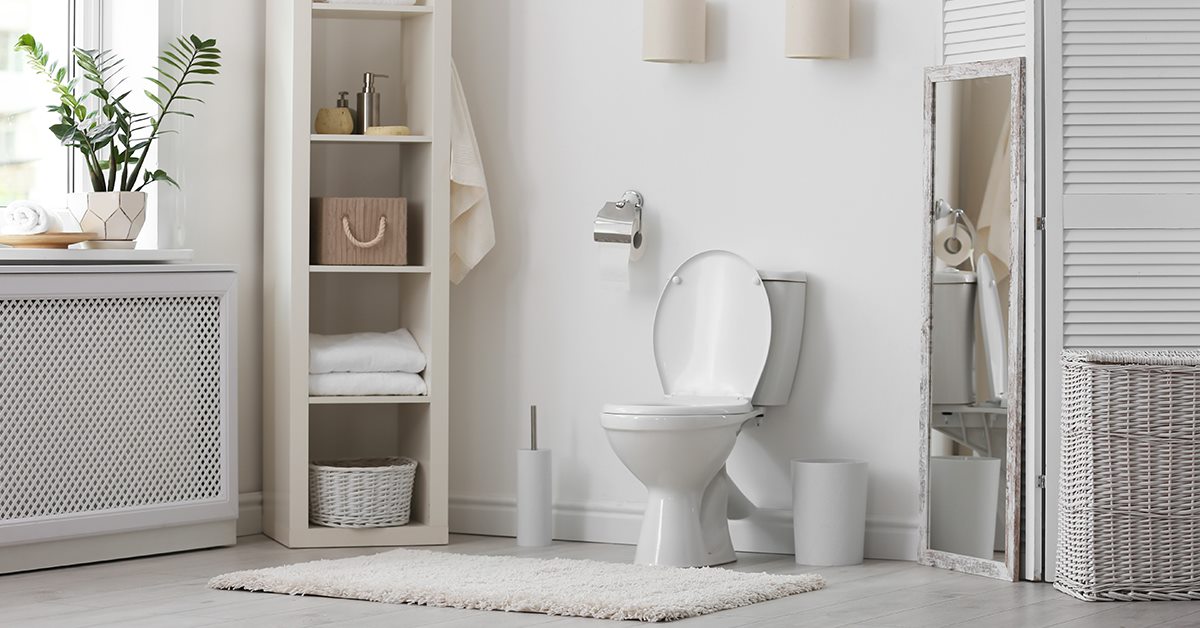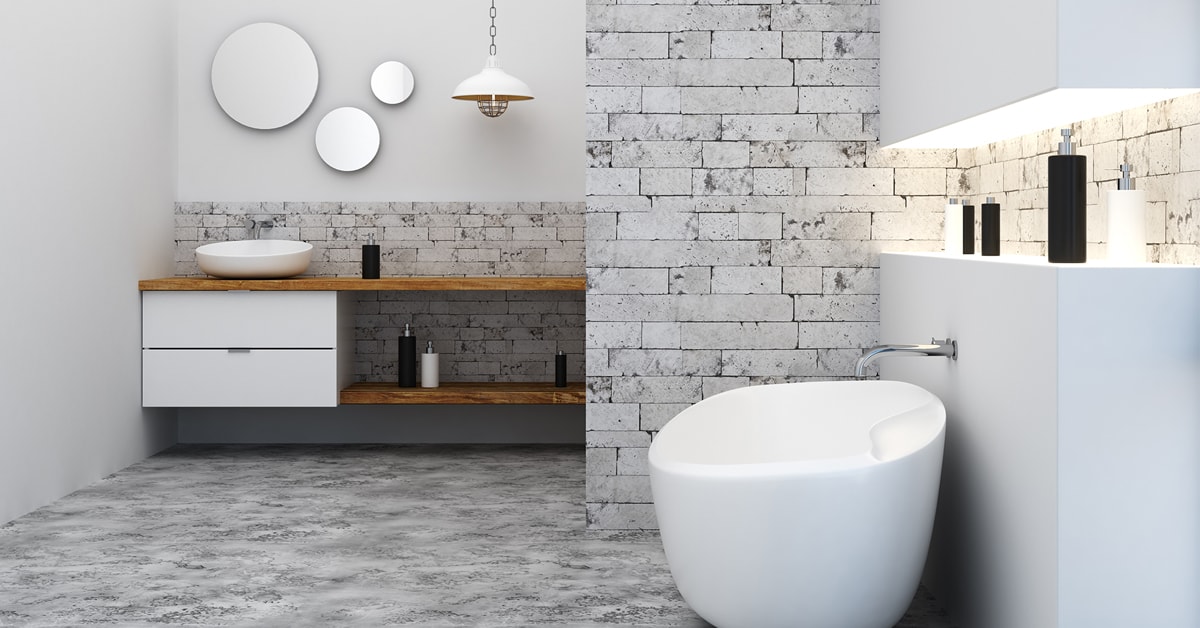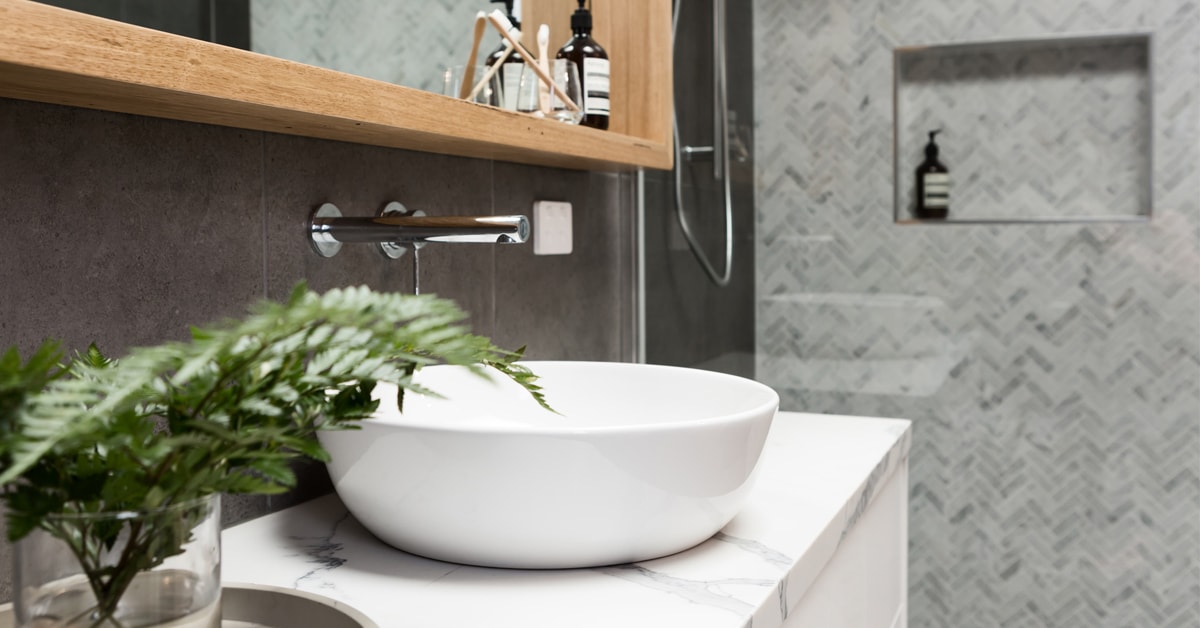The Different Bathroom Flooring Options
Materials
The bathroom is one of the most used rooms in a home. The best flooring material in the bathroom is one that will last and remain waterproof, slip- and fade-resistant throughout its lifespan. It should also complement the decor of the rest of the house and add warmth to the room.
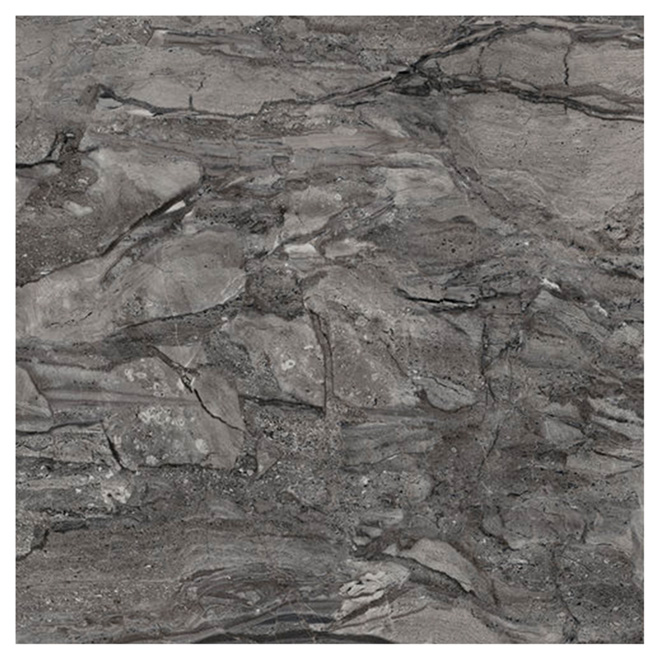
Porcelain and Ceramic tiles
Ceramic and porcelain floor tiles are a popular choice for flooring in the bathroom.
Advantages
- Wide range of designs and styles
- Waterproof, durable, and more affordable than most other flooring options
- Easy to clean, easy to maintain, and stain-resistant
- Available in finishes that emulate wood and stone
Disadvantages
- They may feel cold and hard to touch, so it may be uncomfortable to stand on them for long periods
- Wet porcelain and ceramic tiles can be slippery, when covered by soapy water
- Grout lines require regular sealing and cleaning
Natural Stone
Natural stones make for the best floors in the bathroom if you’re looking for an exotic or classic look.
Advantages
- Unique
- Durable flooring with hard-wearing surfaces that last a lifetime
- Waterproof when properly sealed
- Easily cope with bathroom humidity and moisture
- Available in different textures ranging from etched and tumbled to sandblasted and sawn
Disadvantages
- Expensive and difficult to install
- Requires regular cleaning and sealing to keep looks and integrity
- Slippery when wet and worn
- Literally rock hard and may be uncomfortable to stand on for long periods

Vinyl
Modern vinyl sheets have shed the reputation as being an inexpensive flooring alternative.
Advantages
- Wide variety of designs
- Affordable alternatives to other flooring materials
- Can lie on existing flooring, making them ideal for remodeling bathrooms
- Easy to install and maintain
- Available in waterproof and water-resistant options
Disadvantages
- Not all vinyl tiles are eco-friendly, as some emit volatile organic compounds (VOCs)
- Vinyl and LVTs need careful installation as small imperfections and tiny pieces of dirt in the subfloor can mar their finish
- Vinyl sheets can be quick to wear, known to tear, and may fade quickly
- Some vinyl floor sheets and tiles are porous and need regular waxing and polishing to reseal bathroom floors
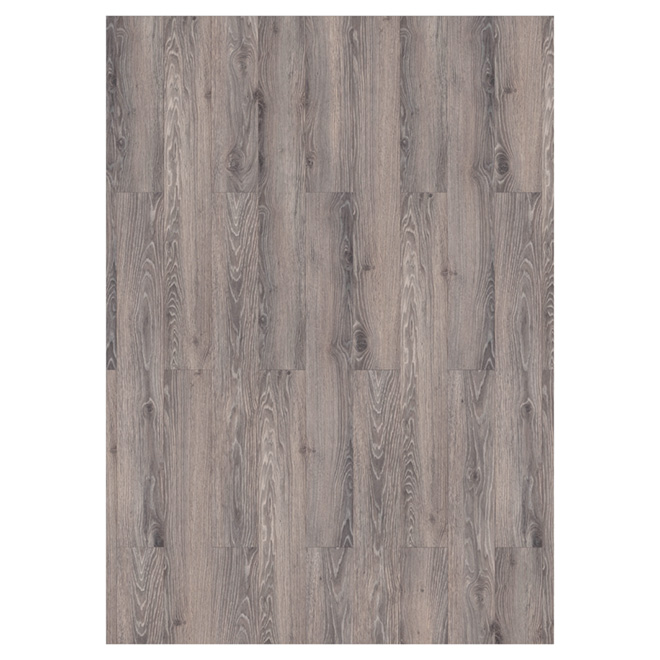
Engineered wood
Engineered wood handles water and high humidity thanks to its multiple layers of finished wood around a plywood core.
Advantages
- Feels and looks like real wood
- Comes in different authentic wood grains and colours
- Can install over existing flooring and serve as a floating floor
- Feels warm and sturdy to the touch
Disadvantages
- Quite expensive and can cost more than solid wood floors
- Not quite waterproof, making it less durable than waterproof flooring alternatives
- Difficult to repair and replace individual floor boards when they get damaged









